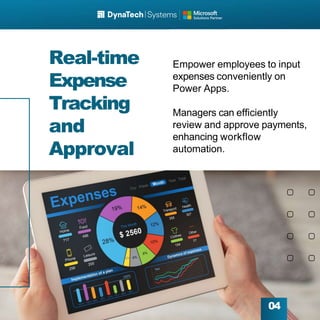Delve into the world of Tools That Combine Expense Management and Workflow Automation, where efficiency meets innovation. Discover how these tools revolutionize business processes and streamline operations in ways you never imagined.
 Uncover the key aspects of these powerful tools and how they can elevate your business to new heights.
Uncover the key aspects of these powerful tools and how they can elevate your business to new heights.
 Uncover the key aspects of these powerful tools and how they can elevate your business to new heights.
Uncover the key aspects of these powerful tools and how they can elevate your business to new heights.
Definition of Tools That Combine Expense Management and Workflow Automation
Expense management and workflow automation tools are software solutions designed to streamline and optimize the process of tracking and managing expenses while automating various workflow tasks within an organization. These tools are typically cloud-based platforms that offer a centralized system for employees to submit, track, and approve expenses, as well as automate routine tasks and processes to improve operational efficiency.Integration of Expense Management and Workflow Automation
Expense management and workflow automation are seamlessly integrated in these tools through features such as automated expense report generation, real-time expense tracking, approval workflows, and integration with accounting systems. By combining these functionalities, organizations can eliminate manual data entry, reduce errors, and ensure compliance with expense policies and regulations.Benefits of Using These Tools
- Increased Efficiency: By automating repetitive tasks and workflows, these tools save time and reduce manual errors, allowing employees to focus on more strategic activities.
- Cost Savings: Streamlining expense management processes can lead to cost savings by reducing processing time, minimizing errors, and improving visibility into expenses.
- Enhanced Visibility: These tools provide real-time insights into spending patterns, budget adherence, and approval statuses, enabling better decision-making and financial planning.
- Compliance and Control: By enforcing expense policies and approval workflows, organizations can ensure compliance with internal controls and external regulations, minimizing risks of fraud or non-compliance.
Common Features of Tools That Combine Expense Management and Workflow Automation
Expense management and workflow automation tools offer a variety of features to streamline processes and improve efficiency in organizations. Below are some common features found in these tools:1. Automated Expense Reporting
- Automatic capture and categorization of expenses
- Integration with corporate credit cards and bank accounts
- Real-time tracking of expenses and receipts
2. Approval Workflows
- Customizable approval workflows based on company policies
- Automated notifications for pending approvals
- Ability to set spending limits and permissions
3. Integration with Accounting Systems
- Seamless integration with accounting software for easy reconciliation
- Transfer of approved expenses directly to the accounting system
- Generation of financial reports for analysis and decision-making
4. Mobile Accessibility
- Mobile apps for capturing expenses on-the-go
- Ability to submit and approve expenses from anywhere
- Real-time updates and notifications on mobile devices
Implementation Strategies for Integrating Expense Management and Workflow Automation Tools
Implementing tools that combine expense management and workflow automation within an organization requires careful planning and execution to ensure a smooth transition and maximize efficiency.Steps for Effective Implementation
Before rolling out these tools, it is essential to:- Conduct a thorough analysis of existing processes and workflows to identify areas that can benefit from automation.
- Choose the right tool that aligns with the organization's needs and goals.
- Provide comprehensive training to employees on how to use the new tools effectively.
- Gradually implement the tools in phases to minimize disruption to daily operations.
Potential Challenges and How to Overcome Them
During the implementation process, organizations may face challenges such as:- Resistance to change from employees accustomed to traditional processes.
- Integration issues with existing systems and software.
- Data security and compliance concerns.
-
- Communicate the benefits of the new tools to employees and involve them in the transition process.
- Work closely with IT teams to ensure seamless integration with existing systems.
- Implement robust security measures and ensure compliance with regulations.
Best Practices for Maximizing Efficiency Post-Implementation
After successfully integrating expense management and workflow automation tools, organizations can:-
-
- Regularly review and optimize workflows to identify areas for further automation and improvement.
- Collect feedback from employees to address any usability issues and make necessary adjustments.
- Utilize analytics and reporting features to track performance metrics and make data-driven decisions.
-


